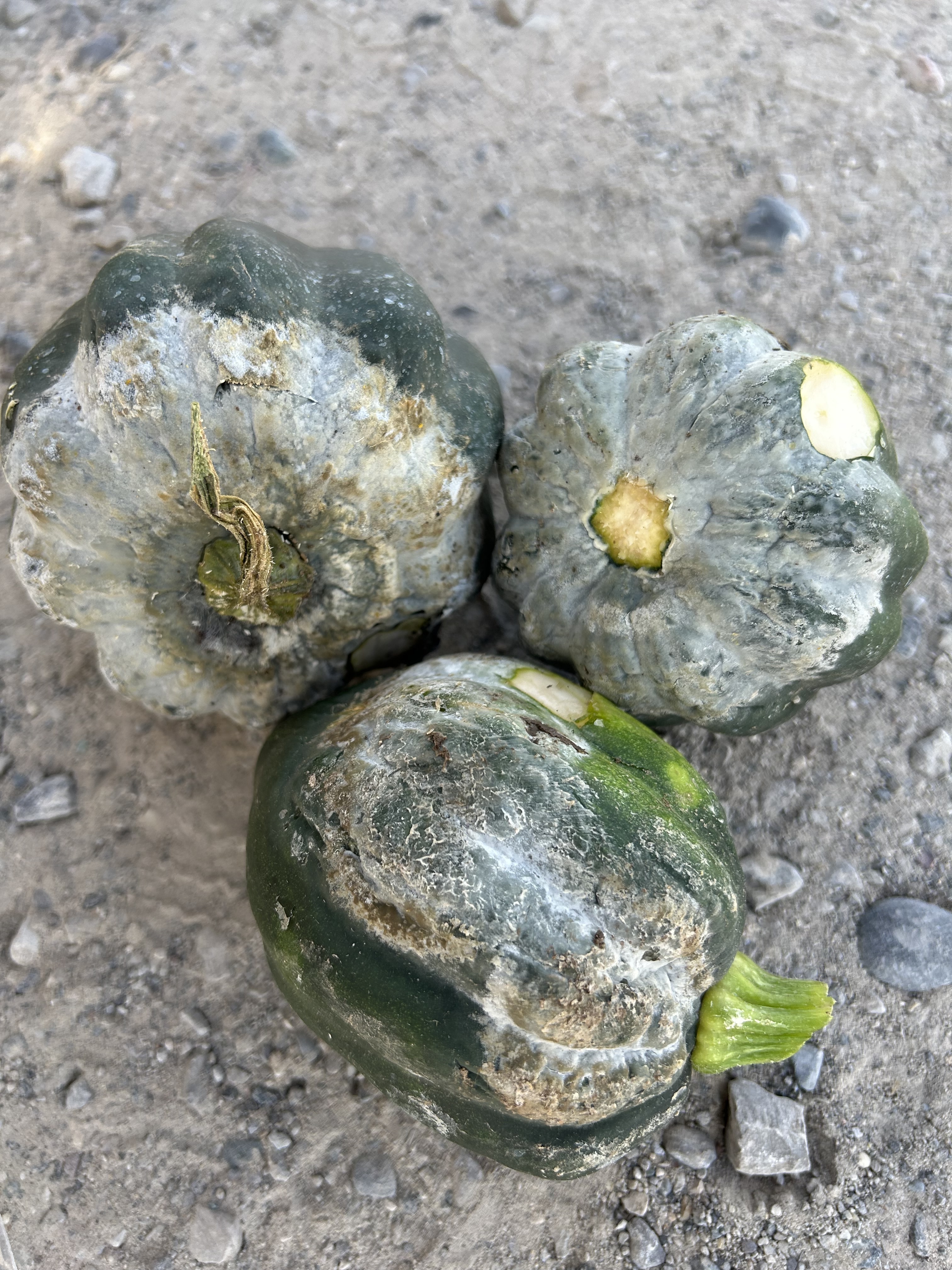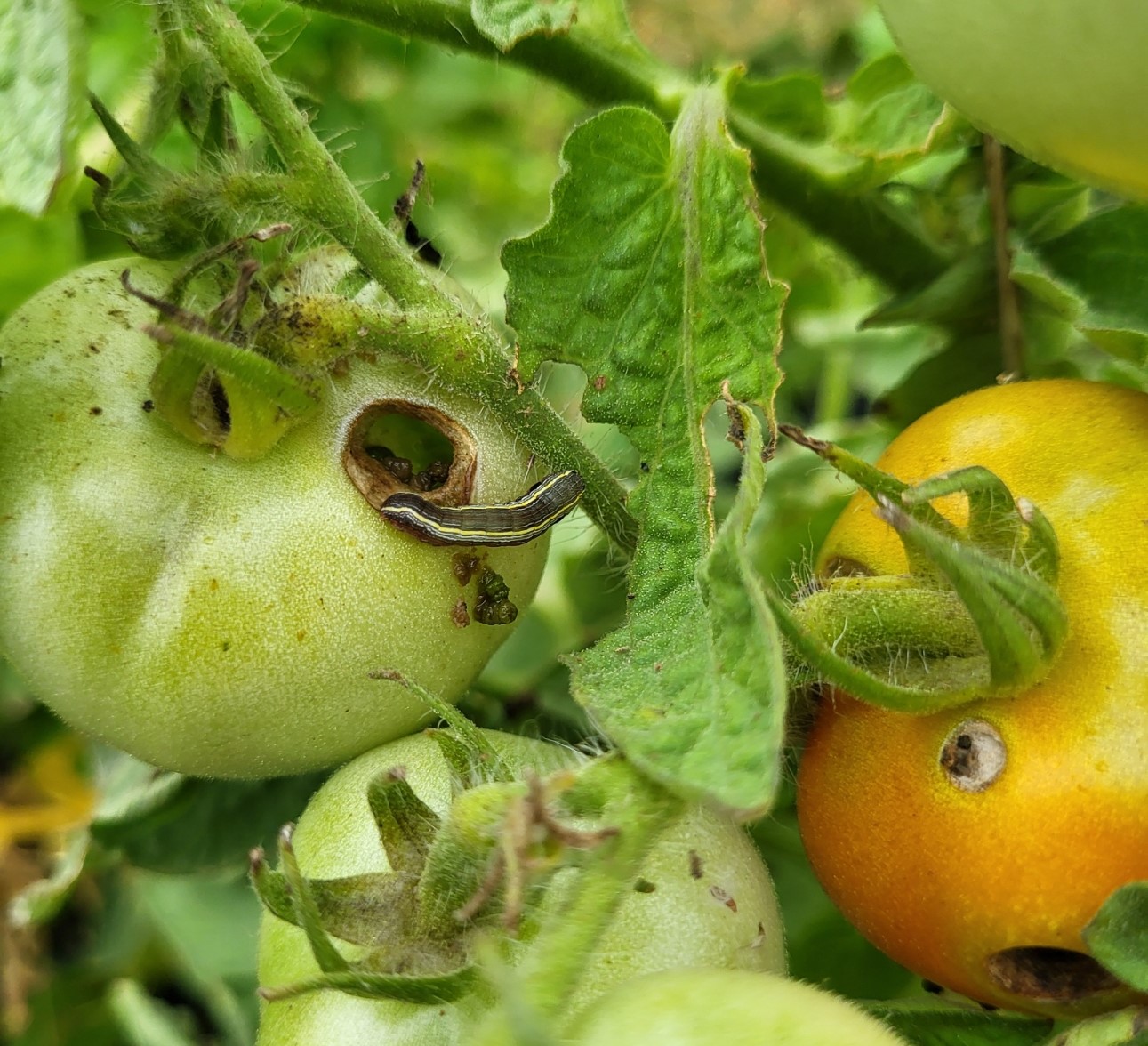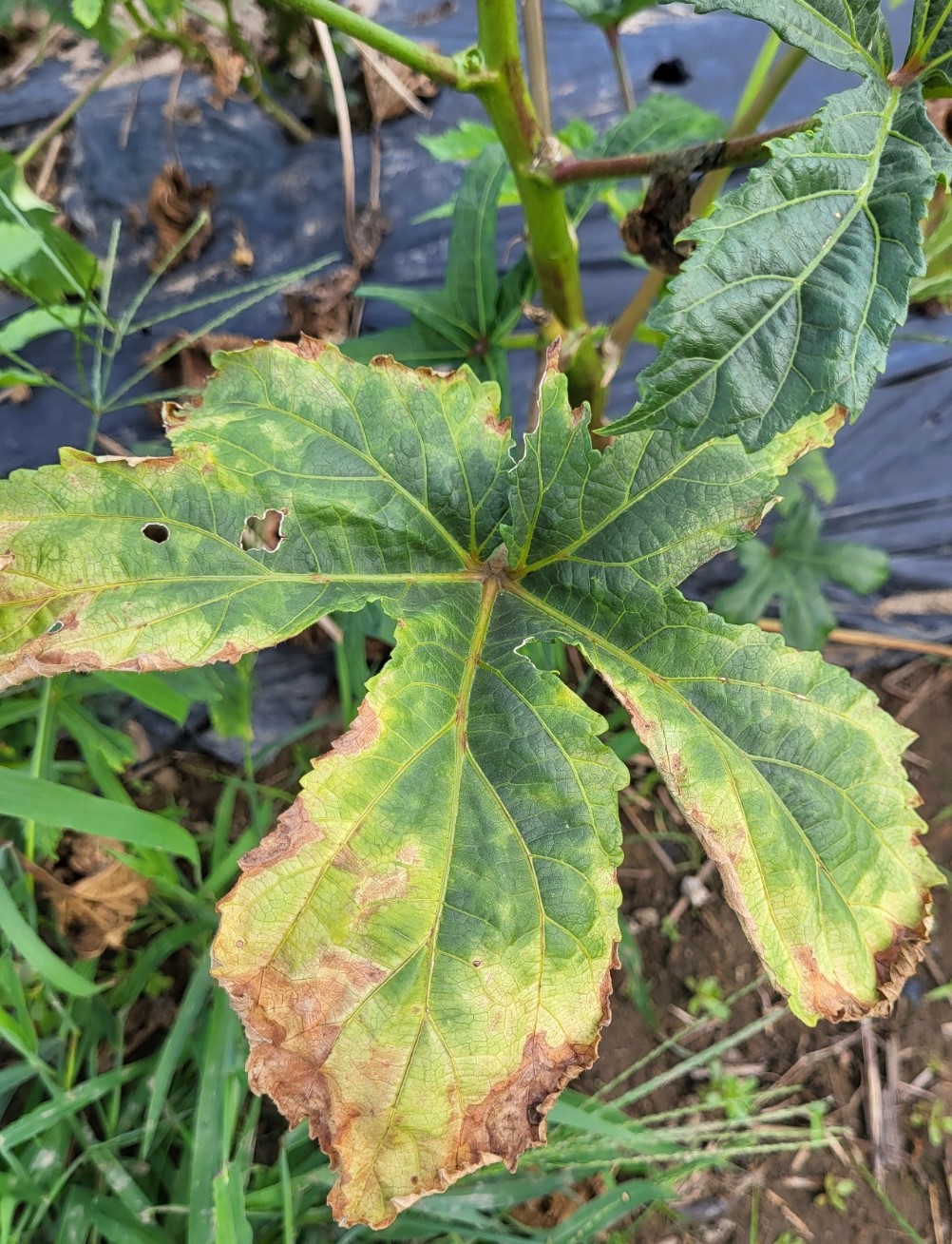Michigan vegetable crop report – August 28, 2024
Evapotranspiration levels in the corn belt are high, and sweet corn is delicious, leading to two potential meanings for “corn sweat.”

Weather
Many news outlets are buzzing about evapotranspiration levels across the Midwest and citing the moisture-emitting capacity of the many acres of field corn and its effect on humidity. Any vegetation would (and is) doing the same thing, but the data is readily available for corn and has made for fun terms, like corn sweat. We know the transpiration rate of this managed crop, and the acreage, and we know less about the total acreage of something complicated like red oak trees with an understory of spicebush, raspberry and fern. So, corn grabs the headlines.
The upcoming week’s forecast includes:
- Warm with scattered showers and thunderstorms possible to the south Wednesday, Aug. 28. Decreasing clouds and cooler to the north. Variably cloudy and dry Thursday. Showers and thunderstorms developing northwest overnight Thursday and spreading southeast through the day Friday. Cloudy and cooler with scattered showers possible Saturday and Sunday to the north. Fair, dry and cool to the south this weekend. Fair, dry and cool early next week statewide.
- High temperatures from the upper 60s north to the mid-80s south Wednesday, 70s to near 80 Thursday, low 70s north to mid-80s south Friday, then cooling to the upper 60s to mid-70s this weekend. Low temperatures from the 50s north to mid-60s south through Friday falling to the 40s north to 50s south this weekend.
- Below-normal precipitation totals with most falling today through Friday.
- Near normal daily (evapotranspiration) PET rates expected this week (average daily values from 0.13-0.16 inches).
- Medium range outlooks generally call for drier than normal weather with mean temperatures warming from cooler than normal levels next week to above normal levels the following week.
Crop updates
Asparagus
Cooler temperatures slowed disease severity value (DSV) accumulation between Aug. 20-26. Between 1-6 DSVs accumulated over this period at nine Oceana and Mason County locations with weather sensors. For most of these locations, a fungicide application would have been indicated for this Monday if nothing had been applied since about Aug. 10-14. Some locations did not accumulate as many DSVs as these, showing the value of having sensors on each farm. High dewpoints since Monday have likely accelerated DSV accumulation.
Brassicas and greens
Broccoli, cauliflower, cabbage, collard greens, kale and salad mixes of all types are being planted and new plantings are going in for fall harvest. The cooler weather of autumn makes many leafy greens much less prone to bolting or slow growth. Certain varieties are less susceptible to setting seed, which are commonly grown for summer harvest.
White mold has been reported as a significant problem on some farms this season. Cabbage may become infected at the lower stem near the soil line but can also occur on the cabbage heads. Initially, the infections can appear dark and water-soaked before becoming soft. The production of black, seed-like structures (sclerotia) on the diseased plant are diagnostic of white mold. It is the sclerotia that allows the pathogen to overwinter and persist in the soil for several years. During the subsequent growing season when the weather is wet, the sclerotia develop small, brownish structures that resemble mushrooms. It is in these mushroom-like structures that ascospores are formed, which are discharged into the environment and carried by wind currents to nearby healthy plantings. While cool and wet conditions favor white mold development, the disease can occur across a broad temperature range.
Crop rotation is important but may not be enough to prevent outbreaks when the weather favors disease. Choosing sites with good airflow that are not bordered by woods may reduce the extended periods of leaf wetness that favor infection and disease. Fungicide application can be helpful but may be difficult to time for cabbage and other crucifers. Growers with significant outbreaks of white mold in their crucifers are encouraged to work directly with their Michigan State University Extension educator and Mary Hausbeck, the campus-based plant pathologist for specific fungicide recommendations.
Carrots and celery
Six DSVs accumulated at two west central Michigan carrot fields Michigan State University (MSU) Extension is monitoring. At these locations, a fungicide application would have been indicated Monday if nothing had been applied since around Aug. 14-15. More recent high temperatures and dewpoints have likely accelerated DSV accumulation.
Cucurbits
All crops are being harvested, and pumpkins are ripening early for many growers. Pumpkins grown on plastic mulch are always prone to racing ahead. Maintain powdery mildew and Plectosporium protection.
Stay vigilant against downy mildew and Phytophthora pathogens. Downy mildew on cucumber has been confirmed in 17 Michigan counties across all major production regions. MSU’s spore trapping and alert system has wrapped up for the season. Mary Hausbeck’s MSU vegetable pathology program has developed short fact sheets that are regularly updated to include the most effective and recommended fungicides that have been shown in years of field trials to be effective against these destructive pathogens.
Phytophthora fruit rot often reaches a peak in late summer and early fall as winter squash and pumpkins mature. For pumpkins growing in Phytophthora-infested parcels, it may be helpful to harvest early and remove the fruit from the field and store in a dry location. Oftentimes, some disease will develop post-harvest as infection would’ve occurred while in the field but develops later on. There are no dips or treatments post-harvest that help with fruit rot.
For zucchini and cucumbers, the recent cooler temperatures will have slowed down fruit development which increases the time of exposure to Phytophthora. Fungicide treatment is helpful but good coverage of the fruit is important. Applying the fungicides with adequate water is needed to penetrate the plant canopy to gain contact with the fruit. With harvesting, be mindful of the preharvest intervals. There are helpful factsheets for each cucurbit type. Growers who use these greatly appreciate them.

Fruiting vegetables
Eggplants are going to market now as well as peppers, tomatoes and okra. Late plantings are starting up and early plantings are shutting down. Bacterial pathogens abound, and caterpillars and stinkbugs are feeding more on fruit now. The characteristic thrips halo-shaped feeding damage can be found on tomato and pepper fruit at variable levels. Aphids are thick in some greenhouses and high tunnels. Consider the release of biocontrol organisms in contained, higher value spaces for managing surges in pest pressure. Introducing beneficials is best done before populations of aphids, thrips, mites, etc. reach extreme levels of infestation. Temperature conditions and selecting the right organism for the pest you are targeting are also important. Once these criteria are met and the beneficial organism is established, it can be a productive form of non-chemical control. Refer to MSU Extension bulletin E3299 “Commercially Available Biological Control Agents for Greenhouse Insect and Mite Pests” for details on the options that are out there.

Verticillium in eggplant and okra is a well-known but highly destructive pathogen in this crop. Verticillium wilt is caused by Verticillium albo-atrum and Verticillium dahliae. Verticillium wilt is considered the most destructive and serious disease of eggplant. While these fungi can infect other crops (e.g., tomato), eggplant and okra are especially susceptible. These soilborne fungi can result in 60 to 100% yield loss when symptoms appear early in the season. Even partial control of disease with fumigation increases yields three- to four-fold, making fumigation a standard control practice. Although four-year rotations are helpful in reducing the risk for Verticillium wilt outbreaks, Verticillium spp. can persist in fields for eight years as mycelium or micro-sclerotia. Significant progress has not been made in the development of resistant varieties. There are no known fungicides that are consistently effective against this pathogen so choosing a planting site that has not hosted Verticillium susceptible crops is key to limiting loss.

Sweet corn
Harvests continue with good conditions in many parts of the state. Some farms are finishing up this week with back-to-school replacing the cookouts and road trips of summer, while others forge on.
Bird damage to sweet corn has dropped off at this point in the season now that there is abundant field corn around. Each farm approaches bird management a little bit differently. Some growers use propane cannons or recorded distress calls to startle birds and keep them moving. Laser scarecrows are a more costly route but can work well. Any device used will need to be moved around to prevent acclimatization. Detasseling once ears are fertilized can reduce sites for birds to perch to deter bird feeding.
Corn earworm captures increased at some locations over the past week-especially in west Michigan, and earworm was present in corn in some fields. To our south, trap catches have been higher in some parts of Purdue University’s trap network, while they remained low in Ohio State’s. The insect Forecast website predicts a low risk of a corn earworm migration tomorrow along the southern half of the Lake Michigan shore.
Products containing the active ingredients chlorantraniliprole or spinetoram may perform better than pyrethroids if and when captures increase. Tighter spray intervals may improve control when trap catches are high and/or weather is warm. Spraying can be discontinued once corn has 90% brown silks, as it’s the green silks that attract egglaying females.
|
Corn earworm captures. Total in trap for week1 (avg # per night2) |
||||||||
|---|---|---|---|---|---|---|---|---|
|
Week |
Monroe |
Washtenaw |
Oceana |
Ottawa |
Lapeer |
Bay |
Saginaw |
Berrien |
|
8/26 |
6 (0.9) |
2 (0.2) |
169 (24.1) |
119 (17.0) |
- |
8 (0.9) |
3 (0.4) |
28 (4.0) |
|
8/19 |
- |
0 (0) |
41 (13.7) |
44 (8.8) |
0 (0.0) |
3 (0.4) |
1 (0.1) |
18 (2.6) |
|
8/12 |
0 (0.0) |
0 (0.0) |
15 (1.4) |
8 (0.9) |
0 (0) |
0 (0.0) |
3 (0.4) |
5 (0.7) |
|
8/5 |
1 (0.1) |
0 (0.0) |
6 (0.9) |
28 (4.0) |
- |
1 (0.1) |
1 (0.1) |
4 (0.5) |
|
7/29 |
4 (0.5) |
0 (0.0) |
4 (0.7) |
13 (1.6) |
0 (0.0) |
0 (0.0) |
0 (0.0) |
3 (0.4) |
|
7/22 |
2 (0.4) |
0 (0.0) |
1 (0.1) |
0 (0.0) |
- |
1 (0.1) |
0 (0.0) |
4 (0.5) |
|
7/15 |
0 (0.0) |
1 (0.1) |
8 (1.1) |
15 (1.7) |
2 (0.3) |
0 (0.0) |
- |
- |
|
7/8 |
0 (0.0) |
2 (0.2) |
8 (1.1) |
14 (2.0) |
- |
- |
- |
- |
|
6/30 |
- |
- |
5 (1.0) |
30 (6.0) |
- |
- |
- |
- |
|
6/23 |
- |
- |
2 (1.0) |
- |
- |
- |
- |
- |
|
1Total number collected since last trap check; 2The total number divided by the number of nights since the last trap check |
||||||||
Breakfast on the Farm
If you are interested in hosting a Breakfast on the Farm event on your farm next year, or if you would like more information on the community engagement opportunity to see if it is a right fit for you, please reach out to your local MSU Extension educator or Ashley Decker at kuschela@msu.edu or 586-469-7616.
Nutrient management survey
Soil nutrient deficiencies that limit crop yield are often foremost on farmer’s minds but nutrient excesses, especially phosphorus and nitrogen, seem to grab the headlines. Michigan State University Extension is asking farmers from all types of production systems to help identify practices they use by filling out a brief anonymous online survey describing soil conditions and approaches used for soil phosphorus and nitrogen management. Read more information and access the survey.
Produce food safety On-Farm Readiness Reviews
Schedule an On-Farm Readiness Review (OFRR) today for a two-hour educational visit that takes place during the harvest season and is meant to be casual and low stress! Everything discussed during an OFRR is confidential and focused on ways you can reduce your own risks in relation to produce safety. There is no pressure to take our advice either, we are just here to support you in your produce safety efforts!
Events
- Aug. 29, 7-8 a.m., Field Crops Virtual Breakfast Series: Maximizing Wheat Yield Potential
- Sept. 5, 7-8 a.m., Field Crops Virtual Breakfast Series: Drought-Proofing Agriculture with Drainage Water Recycling
- Sept. 5, 3-7 p.m., Organic Vegetable Production Workshop & Crop Walk, MSU Tollgate Center, Novi, MI
- Sept. 5, Long-Term Agroecosystems Research Field Day at the W. K. Kellogg Biological Station.
- Sept. 5, 5:30-7:30 p.m., Genesee County Twilight grower gathering at Edible Flint Education Farm, Flint, MI
- Sept. 12, 7-8 a.m., Field Crops Virtual Breakfast Series: Grain Marketing
- Sept. 17, 6-8 p.m., Veggie Vibes at SWMREC
- Sept. 19, 7-8 a.m., Field Crops Virtual Breakfast Series: Late Season Weed Control
- Sept. 23, Field Day at the Trevor Nichols Research Center, Fennville, MI
This work is supported by the Crop Protection and Pest Management Program [grant no. 2021-70006-35450] from the USDA National Institute of Food and Agriculture. Any opinions, findings, conclusions, or recommendations expressed in this publication are those of the author(s) and do not necessarily reflect the view of the U.S. Department of Agriculture.



 Print
Print Email
Email

